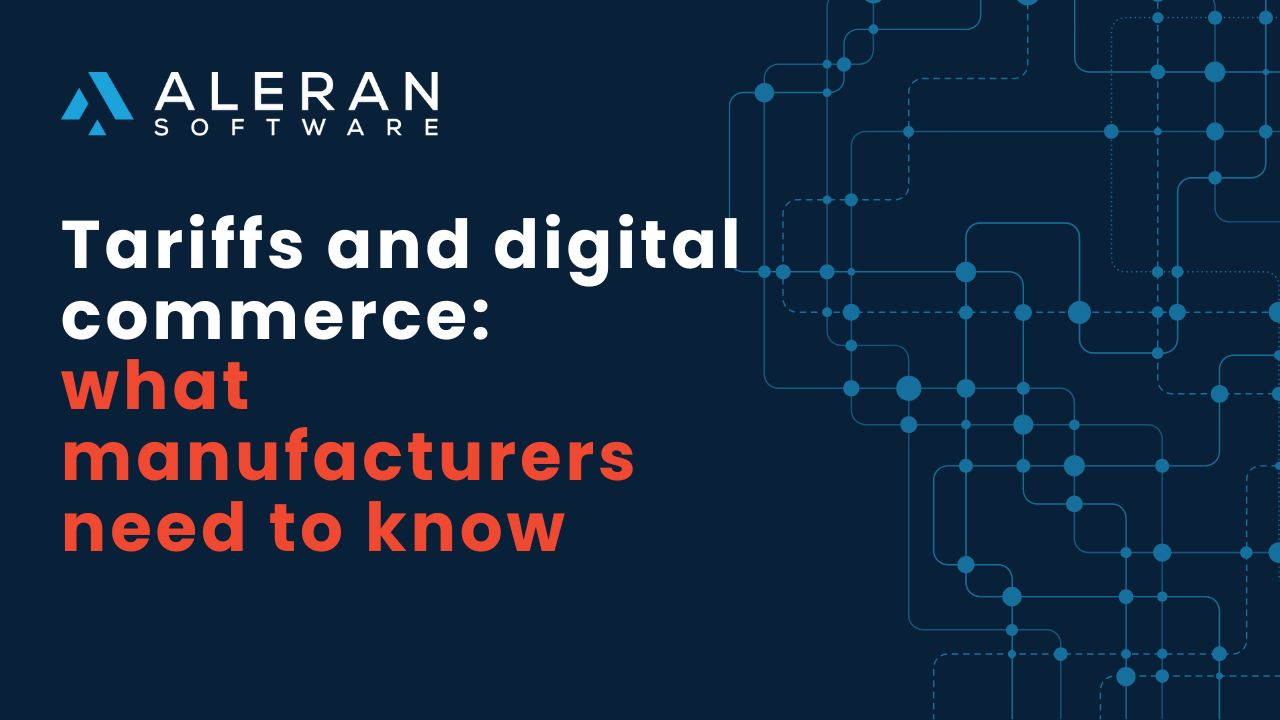From climate crises and geopolitical conflicts to pandemics and trade wars, disruptive and market-shifting influences are once again forcing the manufacturing industry to react and adapt, accelerating shifts to digital commerce and their overall operations. Now, as a 90-day pause on reciprocal tariffs with the exception of China was most recently announced, manufacturers are reeling from the surprise reversal. Regardless of the latest whiplash, tariff threats aren’t going away and swift action will be essential to helping manufacturers brace for the impact.
As Jay Timmons, President and CEO of the National Association of Manufacturers, warned in an April 2025 news release, the stakes for manufacturers have never been higher:
“Many manufacturers in the United States already operate with thin margins. The high costs of new tariffs threaten investment, jobs, supply chains and, in turn, America’s ability to outcompete other nations and lead as the preeminent manufacturing superpower.”
Indeed, broader looming tariff changes are poised to strain the manufacturing sector even further: driving up operational costs, disrupting supply chains, and complicating pricing strategies — all of which ultimately threaten competitiveness and profitability.
So what can manufacturers do now?
Planning for and taking steps to commit to digitizing business processes will make it easier for manufacturers to respond nimbly and effectively to a rapidly changing manufacturing and market landscape – with or without tariff changes. These latest disruptions illustrate how traditional and largely manual sales operations and daily business processes are a major liability — they limit visibility, slow down decision-making, and make it harder to implement critical changes, like pricing adjustments.
For manufacturers, digital transformation isn’t optional — it’s urgent.
The five steps manufacturers can take now to navigate
- Adopting Agile Pricing and Product Management
Benefit: Quick adaptation helps manufacturers respond to and manage cost fluctuations caused by tariffs and other adverse events
How it works: A unified digital commerce platform allows manufacturers to make real-time and swift updates to product catalogs and pricing structures across all their sales channels. This agility ensures that manufacturers can promptly respond to tariff-induced or other market changes to their input costs, maintaining competitive edge and profitability.
2. Centralizing Sales Enablement
Benefit: Equipping sales teams with accurate, up-to-date information.
How it works: With a centralized repository for sales content, pricing, and product availability, a unified commerce platform ensures that sales representatives and distributors have the most up-to-date and relevant data points at their fingertips. This clarity is crucial for effective communication with customers during periods of uncertainty, whether tariff-induced or otherwise.
3.Diversifying & Expanding Omnichannel Sales
Benefit: Reducing dependency on any single market or channel.
How it works: Support sales more effectively across all selling channels, including eCommerce, marketplaces, and direct sales. This diversification allows manufacturers to quickly and easily shift focus between markets and channels in response to tariff developments, mitigating potential channel-related risks that may emerge as so much is is still in flux.
4. Automating Quoting and Ordering Workflows
Benefit: Enhancing accuracy and speed in sales operations.
How it works: Configure, Price, Quote (CPQ) tools help streamline the creation of configurable quotes that reflect current costs and margins. A lot can change in the two weeks it might take to manually respond to a quote request. A sales CPQ becomes a great way to ensure that quotes reflect the most current pricing data and stay in sync with actual costs.
5. Leveraging Real-Time Analytics Dashboards for Decision Making
Benefit: Informed strategic planning and forecasting.
How it works: By integrating back-end systems like your ERP and CRM with front-end marketing and sales channels, you gain real-time, actionable insights into sales performance, customer behavior, and market trends. This seamless flow of data empowers manufacturers to make data-driven decisions, uncover new opportunities, and proactively navigate challenges such as tariffs
Conclusion
Make no mistake: tariffs present a very real threat to manufacturers, impacting everything from cost, to pricing strategies, to supply chain dynamics. But they aren’t the only looming threat. Taking a digital-first approach will help manufacturers regardless of tariffs or other market events enhance their pricing agility, centralize critical sales information, diversify sales channels, streamline workflows, and get actionable insights to make better decisions. This type of flexibility will be mission-critical to successfully navigating the changes that are here and will continue to unfold.
If you’d like to learn about more ways navigate, we’re here to listen and share learnings from our customers and the manufacturing community. Talk to an Aleran expert today.


